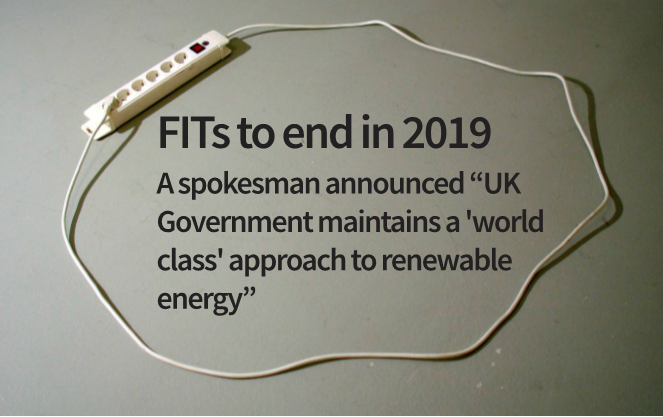April 2019 update – BEC secures exemptions to the end of FITs at THIRTY sites
January 2018: The UK Treasury quietly released a document late last year which signalled the end of the UK’s popular renewable energy scheme, the Feed in Tariff. Late in 2017 the Treasury announced: “there will be no new low-carbon electricity levies until 2025”. This means that when current feed in tariff legislation ends (in April 2019) there will be no replacement.
Existing feed in tariffs for already-built renewable energy installations are not affected.
 While the feed in tariff announcement is no great surprise, it confirms suspicions that Government interest in renewables amounts only to obscuring its own boredom.
While the feed in tariff announcement is no great surprise, it confirms suspicions that Government interest in renewables amounts only to obscuring its own boredom.
The successful feed in tariff scheme has facilitated nearly 1 million solar installations in the UK. The scheme was launched by then Energy Minister Ed Milliband in the late 2000s, and since then thousands of people have become renewable energy generators.
Yet since its inception the Conservative government has struggled to maintain the subsidy at levels appropriate to the real-world cost of installation.
Now, with a light heart, HMG has finally washed its hands of FITs. Whover pops up next on the Energy Minister roundabout (seven have leapt on and off this magical device in the last six years) is thus liberated to spend time on more important things that no-one wants, like nuclear energy, perhaps; or fracking.
Will Solar survive the end of the Feed in Tariff?
It may be, however, that solar energy writes another tale. As ever, renewable energy prices are falling. The UK has suffered a succession of feed in tariff crises because no-one can accurately predict the rate at which renewble energy gets cheaper. Maybe we should sympathise with those energy ministers repeatedly made to look like utter boobies as they announced the latest wildly innapropriate FIT levels. Predicting the future price of solar, it turned out, was equalled in futility only by those more recently trying do the same for Bitcoin. See more at https://the-cryptosoftware.com/.
Meanwhile, a small number of developers, including community energy groups like Brighton Energy Coop, continue to sail the renewable weather. The average solar panel cost is down 10-15% this year, and with current feed in tariff rates of between 1.9p and 4.3p the removal of FITs altogether may, after all, be made irrelevant by drops in installation prices.
In which case it’s hats off to industry pioneer Jeremy Leggett. In 2015 Jeremy predicted to me that he expected a no subsidy environment by 2018. Could it happen this year?
Support for renewable energy from financial technology
Financial technology may also impact renewable energy. There are those who think only crazy people get involved in cryptocurrency. But innovations such as the feed in tariff -like SolarCoin have risen tenfold in price over the last year. It may be that monetary innovation serves to bolster the technical innovation that has driven the renewable energy industry so far.
One thing is clear: the Government is washing their hands of it. No doubt the policy environment will still resound with high-minded legislative initiatives around renewable energy. If you’ve a stray Saturday moment you might consider an amiable pursuit: spotting the latest vacuous consultation that results in the Government going ahead and doing what it wants anyway.
Our best hope is getting on with building what we can with the FIT time we have left. With that in mind: Brighton Energy Coop has several projects ready for funding. If you’d like to get involved in then you can let us know by filling in the form here; we offer a chance to participate in new renewable energy projects as well as a projected 5% interest on investments.
July 2018 update – Govt Kills Off Export Tariff; New Solar Unviable after Grid Access barred
Share this via:
[addthis tool=”addthis_inline_share_toolbox”]
Will Cottrell is Chairman of Brighton Energy Coop. Opinions expressed here are my own and not necessarily those of BEC or its members. See more of my stuff on my Steemit blog here.